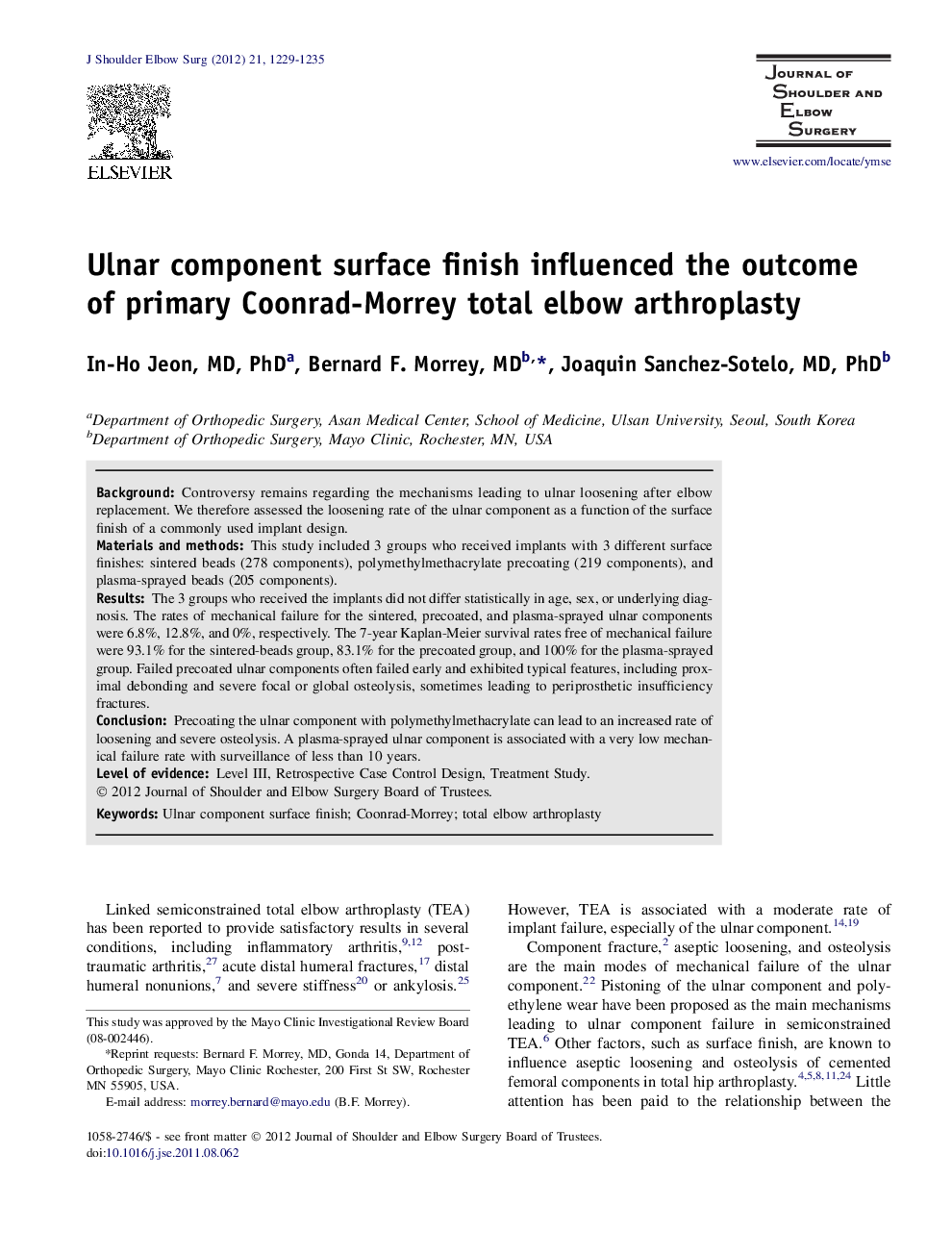| کد مقاله | کد نشریه | سال انتشار | مقاله انگلیسی | نسخه تمام متن |
|---|---|---|---|---|
| 4074331 | 1267006 | 2012 | 7 صفحه PDF | دانلود رایگان |

BackgroundControversy remains regarding the mechanisms leading to ulnar loosening after elbow replacement. We therefore assessed the loosening rate of the ulnar component as a function of the surface finish of a commonly used implant design.Materials and methodsThis study included 3 groups who received implants with 3 different surface finishes: sintered beads (278 components), polymethylmethacrylate precoating (219 components), and plasma-sprayed beads (205 components).ResultsThe 3 groups who received the implants did not differ statistically in age, sex, or underlying diagnosis. The rates of mechanical failure for the sintered, precoated, and plasma-sprayed ulnar components were 6.8%, 12.8%, and 0%, respectively. The 7-year Kaplan-Meier survival rates free of mechanical failure were 93.1% for the sintered-beads group, 83.1% for the precoated group, and 100% for the plasma-sprayed group. Failed precoated ulnar components often failed early and exhibited typical features, including proximal debonding and severe focal or global osteolysis, sometimes leading to periprosthetic insufficiency fractures.ConclusionPrecoating the ulnar component with polymethylmethacrylate can lead to an increased rate of loosening and severe osteolysis. A plasma-sprayed ulnar component is associated with a very low mechanical failure rate with surveillance of less than 10 years.
Journal: Journal of Shoulder and Elbow Surgery - Volume 21, Issue 9, September 2012, Pages 1229–1235